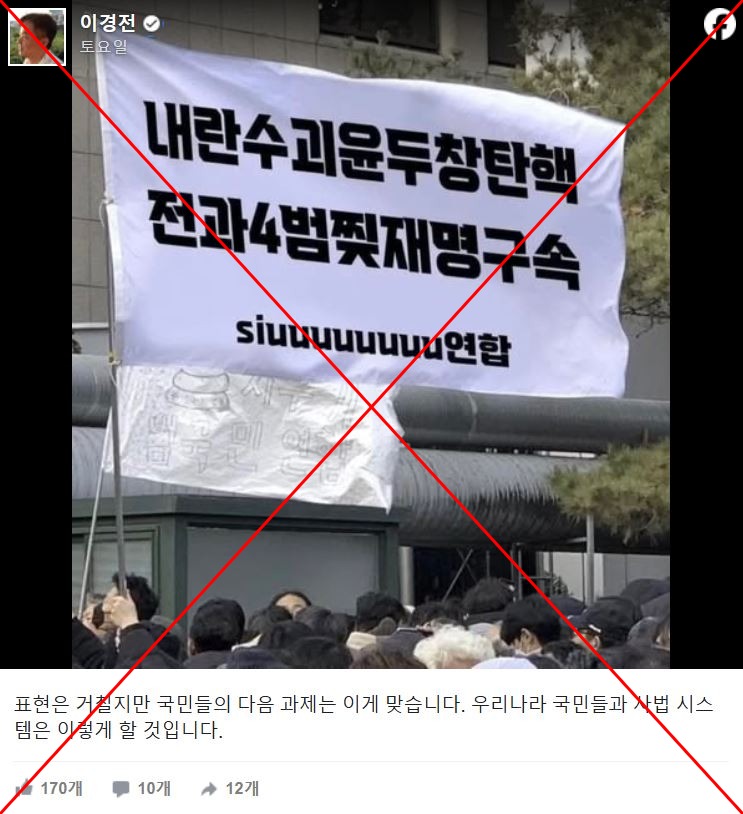Vast protests erupted in South Korea’s capital Seoul against the recently impeached President Yoon Suk Yeol, centered around his brief declaration of martial law in December. The political climate became charged following the parliament’s suspension of Yoon from office on December 14, amid investigations into insurrection and abuse of power allegations. Protests opposing Yoon’s administration garnered significant momentum, but these demonstrations were complicated by the emergence of manipulated images and misinformation on social media. A misleading picture, showing a protest banner that appeared to simultaneously condemn Yoon and call for the arrest of his opponent, Lee Jae-myung, rapidly circulated online, though it was later identified as digitally altered.
Amidst the rising unrest, Yoon’s government faced substantial public pushback, with citizens rallying against both the martial law declaration and his presidency. Lee Jae-myung, leader of the Democratic Party and Yoon’s primary competitor, found himself in a politically advantageous position despite his own legal troubles. Lee narrowly lost to Yoon in 2022, marking the closest election in South Korean history. As tensions heightened following Yoon’s actions, analysts considered Lee a strong candidate for the presidency in any future elections. However, Lee’s criminal record—comprising fines related to previous offenses—cast shadows over his political aspirations, particularly as an impending court ruling could result in his disqualification from office.
The protests in Seoul displayed a striking dichotomy in public opinion. While large demonstrations emerged to call for Yoon’s impeachment, smaller groups organized to express support for his presidency. The slogans used during these rallies—largely centered around impeaching Yoon and addressing Lee’s past convictions—highlighted the contentious nature of South Korean politics. Although the shared social media imagery of a combined anti-Yoon and anti-Lee sentiment drew attention, the authenticity of these visuals was quickly disputed by fact-checkers, who pointed out the misleading nature of the circulated banner.
As the situation evolved, social media platforms became hotbeds for discussions about the protests and their political implications. Users on sites like X and South Korean forums expressed confusion and frustration over the conflicting messages implied in the doctored banner, indicating a broader public struggle to navigate the complexities of the political narrative. The prevailing divisions in public sentiment were evident, with some users reflecting a desire for ‘average’ candidates to emerge in the wake of the political turmoil. This suggests a longing for a more stable and representative political landscape amidst uncertainty regarding Yoon’s leadership.
Investigations into the authenticity of the manipulated image revealed that the original banner showcased a sentiment disconnected from the political enmities depicted in the doctored version. The original message expressed a yearning from citizens to stay home rather than engage in contentious demonstrations. This discrepancy highlighted the challenge of misinformation during politically charged protests, demonstrating how distortion of facts can exacerbate societal tensions. News outlets like Kyunghyang Shinmun and Ohmynews contributed to clarifying the events surrounding the protests, emphasizing the need for reliable information as public protests against the government intensified.
In the midst of political upheaval, Yoon’s declaration of martial law and the subsequent chaos revealed the fragile dynamics within South Korea’s political sphere. As the Constitutional Court prepared to assess Yoon’s impeachment case, the implications of this decision loomed large. With the potential for a snap election on the horizon, the public’s response, heavily influenced by the viral spread of misinformation, could significantly shape the country’s political future. The call for citizens to remain vigilant and discerning in their consumption of information became paramount, accentuating the critical role of ethical journalism and responsible communication in democratic societies.

